In this powerful episode of Inside Personal Growth, host Greg Voisen welcomes Dr. John Bamforth and Dr. Roy Zwahlen — co-authors of the groundbreaking book Race to Innovation: Unleashing the Power of Entrepreneurship for Everyone.
Together, they explore how innovation, inclusion, and entrepreneurship can work hand in hand to create real opportunities for all. Their conversation challenges long-held assumptions in business, revealing how empowering underrepresented communities is not only the right thing to do — it’s a massive untapped business opportunity.
Different Paths, Shared Purpose
John Bamforth’s story begins in a coal-mining town in northwestern England, where he rose through the ranks to lead global teams at Eli Lilly, overseeing innovation across pharmaceutical and healthcare sectors. Roy Zwahlen, on the other hand, grew up across the Middle East — in Jordan, Kuwait, Turkey, and Syria — experiences that gave him a deep appreciation for cultural diversity and global perspectives.
Their paths converged at the University of North Carolina at Chapel Hill, where they worked side by side for six years. Those experiences inspired their shared mission: to reshape how we think about innovation by making entrepreneurship accessible to everyone.
“We realized that we were missing something in the global innovation narrative,” John explained. “There’s incredible potential in communities that have historically been overlooked. The future of innovation depends on inclusion.”
Innovation vs. Iteration: Seeing Beyond the Obvious
One of the most eye-opening parts of the conversation is the distinction they draw between iteration and true innovation.
Many companies, like Apple, constantly improve their products — what the authors call incremental innovation. But real breakthroughs, they argue, happen when someone identifies a deep, unmet need and builds something entirely new around it.
“Innovation has to start with solving a real problem,” John says. “Too often, companies start with a solution and go looking for a problem. That’s not innovation — that’s just iteration.”
Roy adds that divergent thinking — often found in underrepresented or marginalized communities — fuels genuine breakthroughs. “People who’ve lived different experiences see problems differently. That’s where the next big ideas will come from.”
The Catalyst: A Moment of Change
The idea for Race to Innovation took root during one of the most emotionally charged moments in recent U.S. history — the period following the murder of George Floyd.
Instead of focusing on division or blame, John and Roy wanted to write a book that brought people together through the lens of economic opportunity and entrepreneurship.
“We’re not talking about politics,” Roy shared. “We’re talking about untapped value. When marginalized communities are fully engaged in innovation, everyone benefits — businesses, economies, and society.”
The Cost of Exclusion
The authors introduce the concept of the “innovation deficit” — the loss of economic potential that occurs when talented individuals are left out of the entrepreneurial ecosystem.
They point to research showing that the U.S. economy loses billions each year by not fully including women, minorities, and other underrepresented groups. It’s not just a social issue — it’s an economic one.
Roy notes, “It’s an opportunity cost we can’t ignore. Diverse teams perform better, innovate faster, and create more sustainable impact. But those voices need to be brought into the conversation.”
Ownership: The Key to Generational Wealth
One of the most powerful themes in Race to Innovation is the ownership imperative. Using examples from sports and business, the authors show how access to ownership — not just participation — determines who truly benefits from innovation.
John and Roy contrast stories like Joe Louis, who died poor despite his fame, with Michael Jordan, who became a billionaire by owning a share of his brand.
They also highlight modern initiatives, such as Black-owned insurance companies in Atlanta that offer life insurance policies to help families build intergenerational wealth.
“Innovation without ownership,” John explains, “creates impact but not equity. Ownership is what transforms opportunity into legacy.”
Venture Studios and the Power of Shared Innovation
The conversation also explores a new model for entrepreneurship — the venture studio — which flips the traditional venture capital model on its head.
Instead of waiting for entrepreneurs to bring ideas, venture studios start by identifying real problems, then bring in experts, talent, and capital to co-create solutions.
At the Eshelman Innovation Institute, Roy has seen firsthand how this approach can accelerate success for diverse founders who may not have access to traditional funding networks.
“Venture studios start with the problem,” he says. “They bring in talent and resources early — helping innovators who truly understand the problem succeed faster and with more equity.”
AI and the Future of Inclusive Innovation
As the discussion shifts toward technology, both authors agree that AI is a game-changer for entrepreneurship — especially for marginalized communities.
AI tools are democratizing access to design, marketing, and business development, allowing anyone with an idea to turn it into a viable startup. But they caution that true innovation still requires human insight and empathy.
“AI can help you build faster,” John says, “but it can’t understand the human problem on its own. The most powerful innovations will come from people who deeply understand their communities — and then use AI to amplify their impact.”
A Vision for the Future
The conversation concludes with a hopeful vision: a world where innovation is no longer limited by geography, race, or privilege. By opening the doors of entrepreneurship to everyone, we unlock not just individual success, but collective progress.
Race to Innovation isn’t just a book — it’s a call to action for leaders, educators, and policymakers to reimagine how innovation works and who it serves.
“When everyone gets a seat at the table,” Roy says, “innovation accelerates — and we all move forward together.”
Learn More
-
📘 Buy the Book: Race to Innovation: Unleashing the Power of Entrepreneurship for Everyone
-
🔗 Connect with John Bamforth: LinkedIn
-
🔗 Connect with Roy Zwahlen: LinkedIn
You may also refer to the transcripts below for the full transcription (not edited) of the interview.
[00:00.3]
Welcome back to Inside Personal Growth. This is Greg Voisen, the host of Inside Personal Growth. And joining me are two authors that have written a book called Race to Innovation. And, the website is racetoinnovation.net.net and as of this recording, whether you're watching on YouTube or you're listening on Spotify, or you're listening on Apple, the book is available today on Amazon.
[00:28.8]
And we'll put a link in the show notes below. Good day to you gentlemen. How are you doing? Doing great. Great. How are you? I'm doing awesome. And you, Roy? Excellent. Thank you for having me. And Roy, where are you joining us from? I know sometimes I don't ever know where John is.
[00:46.3]
So, yeah, I am here in Chapel Hill, North Carolina. Okay. And John, where are you today? Well, just for today, I am here in Chapel Hill as well, but I leave tomorrow for Spain for six weeks. Well, good for you.
[01:01.3]
That sounds like a good trip. So. Well, you enjoy that. I want to give the audience a little bit of background about both of you gentlemen before we dive into the questions from the book. Welcome to the show. As I've said, I'm really thrilled to have both of you on.
[01:18.0]
You're both leaders who have spent decades at the forefront of innovation, recently, as we said, co authored. This is a groundbreaking book that will hopefully reshape how we think about entrepreneurship. So, Dr.
[01:34.0]
John Bamford and Dr. Roy. And Roy, don't let me mispronounce your last name again. Say it for me. Zwalin. Zwalin. Are here. The book's full title is Race to Innovation. Unleash the power of entrepreneurship for everyone.
[01:51.9]
Dr. John Bamford brings a fascinating journey from coal mining town in Wagon in northwestern England, to cutting edge pharmaceutical innovation and academic leadership. With a PhD, John has spent 30 years at Eli Lilly where he became recognized as a master brand builder and leader of highly engaged, diverse teams.
[02:16.0]
And his bio goes on and on. But, that's a good part of it there. That's plenty. That's plenty, Greg. Yeah. And Roy brings, equally compelling background, shaped by his unique upbringing as an army brat in the Mid east, where he spent his formative years in Jordan, Turkey, Kuwait and Syria.
[02:34.3]
His early exposure to diverse cultures and global, perspectives shaped his worldview and passion for multicultural innovation. He has a law degree from George Mason School, of Law, and he specializes in intellectual property, international trade, public health and economic development.
[02:54.8]
And again, his bio goes on. So the book, Race to Innovation, Challenging the Fundamental assumptions in business that innovation is a zero sum gain. So we're going to get into that with you, both of you. And again, let's kind of start with kind of the background and perspectives.
[03:17.0]
You do come from very different backgrounds. Let's face it, John, this working class English family and joy from a military background across the Middle East. How did your diverse life experiences shape your perspective on innovation and entrepreneurship before you even started writing this book?
[03:38.6]
Yeah, to be honest, Craig coming together at UNC Chapel Hill. So Roy and I have just spent six years working together until my recent departure. I decided to take my second retirement, see where we go from here. But you know, Roy and I worked together for six years at Carolina and you know, that, that difference, that, that those very different backgrounds actually were I think fundamental in pulling the, pulling the book together.
[04:05.9]
You know, the, the book is about global opportunities, us opportunities, but global opportunities for economic growth. By looking at, some different communities in a bit of a different way and because we've got really vastly different backgrounds that kind of when we started to talk to each other about our experiences and our exposure to global business, we came to a common view that in many ways we're missing, the lens on doing things a little differently than the convention.
[04:42.6]
It's easy for me to talk about entrepreneurship for somebody like me because I'm an old white guy and generally speaking, capital goals to people like me. But I think that Roy and I are the firm belief there is massive opportunity beyond that and that's what we tried to pull together in the book.
[05:02.0]
And Roy, your perspective? Yeah, completely aligned with John. I think one of the pieces that although in different contexts, both John and I talk a lot about is how we've seen what this looks like from a successful perspective.
[05:17.3]
Right. With John managing diverse teams from all over the world, as part of his farm experience. Myself kind of growing up in very multicultural settings, going to schools there, they were literally embassy kids from all over the world. Right. And so kind of experiencing what that looks like very early on and then seeing that professionally as I've gone through my career, I think when we talk about innovation and entrepreneurship, we sometimes forget that those two things are actually people, businesses.
[05:45.5]
And it's our ability to leverage talent. Right. To actually pull out the best in talent, regardless of their professional background, their lived experience, their cultural heritage, whatever that might be. All those things make up who we are and really drive innovation and entrepreneurship in ourselves.
[06:02.5]
And so we wanted to be very intentional in the way that John mentioned of and thoughtful about. Well, what is it, right. What is it that brings out innovation and entrepreneurship and people, particularly in underserved communities, which is where we focus here. Yeah, I can see that. And this is a very unique book in that respect.
[06:19.8]
Right. And one of the things I have to ask you because this happens a lot on innovation, versus iteration. You know, many companies, let's just use Apple as an example, they just keep iterating the iPhone, obviously.
[06:39.0]
It just keeps getting better and better. If you looked at just what Tim, Cook did with this announcement just last week and you look at the earbuds and you look at the iPhone and you look at the watch and you look at everything they sell. Those are all iterative. Yeah.
[06:54.9]
The question is, is we're speaking about true innovation in this case? Could you guys kind of comment for the listeners out there about your true dip. Your opinions about, hey, iteration versus innovation? I think it's always interesting.
[07:10.9]
Yeah. So the way I think about it, Greg, is, you're often. And we, we have this in universities all the time with, with faculty and you know, when I was at Carolina I was on faculty, so I can, you know, talk about ourselves a little bit is sometimes we we find the solution looking for a problem.
[07:31.5]
So you know, we've got this great idea. We think it's going to be, you know, that's not what we're talking about. We're looking at market opportunities, real need within, within a marketplace or within a community where we bring a unique solution based on that.
[07:47.7]
So it's, it has. The innovation has to be rooted in a fundamental problem that needs to be solved. That's why some of these communities will see that lens or will have a different lens on many of those problems. So it's, it's, it's super important to hunt that innovation out and get that perspective of that different lens.
[08:09.2]
It's very, the very good perspective. And Roy, do you have anything to add to that or. Yeah, just real briefly, you know, it is. Apple's a really interesting case study, right. Where you go from the very beginning where they were very divergent thinkers, right. With a, you know, with a technology solution that they were trying to do exactly what John described.
[08:30.6]
And it really, you know, getting a computer in your pocket, as I think the saying goes. Right. That was going from that to the, to your point about incremental innovation. Right. It is a category of innovation, but it is exactly as you described. And for John and myself it's okay to say this John.
[08:48.8]
I think in our mind, you know we're, we really are looking for those transformative opportunities and being early stage, you know folks in the startup space, venture capital really rewards that. Right. They're looking for the break breakthrough innovations. In healthcare it's therapeutics.
[09:04.2]
Right. For confundantly change the landscape or digital health technologies. So we are looking for advantages and I think John articulated a really good one of one great place to look for divergent thinking is actually in these underserved communities. Right. That by definition are going to look at a problem differently and are going to come up with solutions from a completely different frame.
[09:24.4]
And if you know, using the framework we discussed, there's opportunities to make not just think about how do we as I like to say, bring Nikes to the black community and sell it into the black community, but launch the next fubu, right. The for us bias brand that came out of the black community.
[09:40.1]
That is a global opportunity. Right. It's scaled and so I think that's the, the frame we have to think about. That is often hard to do in the corporate setting when you are trying to drive quarterly returns and, and you can bias yourself towards incremental innovation. Yeah, I'm glad, I'm glad I asked you both that question.
[09:56.8]
Yeah, go ahead John. No, I was just going to say, you know it's really, you know, for a corporate like Apple at the stage that they're at, Roy hinted at this. You know, think about my old company, Lily now who is known right now for the obesity drugs that are in market and are so popular right now.
[10:14.1]
You know, a dollar spent on that business, right now on that obesity business, be it advertising, whatever, is always going to return. Much more than a dollar spent out there, in a brand new space exploring brand new maybe significant innovation.
[10:32.0]
But the finance folks in that company is always going to say oh hold on a minute, if I spend another dollar on advertising, I'm going to get far better return. So it's always hard in that big corporate setting. Yeah, it is. And let's talk about the catalyst. The book began with the tumultuous period after George Floyd, right.
[10:50.6]
In Minnesota. The murder of George. What was the specific moment or conversation that made you both realize that the book needed to be written and using this as the catalyst? Yeah, you know, and this is continued to the present day.
[11:11.9]
You know, we're in a very contentious period in history, I think where you know, the fingers are being pointed across the aisle. You know, it is just a tough time for all of us, frankly.
[11:27.4]
You know, we've just. In the last week, it's, been ramped up even more by some of the things that happened in Utah. And, you know, when Roy and I were reflecting what was going on back then, we, you know, we played back to what we talked about earlier around our, background and experiences and say, look, we're not.
[11:44.8]
We're not. We're not talking about the things that can fundamentally change the script here. All we're doing is pointing fingers at each other and speaking in ways that don't move the narrative forward in any way, shape or form. We had observed for ourselves that these types of communities can bring massive amounts of value if we think about them in a bit of a different way.
[12:08.4]
So that was the debate, the discussion. And to be perfectly honest, Roy, I can't remember the moment. Let's write a book. But that's where the genesis came from, is, look, nobody's telling this story about the opportunity to come together as a country, frankly, as a globe, to think about this in a very, very different way.
[12:29.2]
This is a business opportunity. Right. This is not DE and I is wrong. This is a business opportunity. I see it that way too. And I'm hoping that the readers who purchase your book also, pick that up and understand that.
[12:47.6]
And one of the things is that you say that kind of in the history and lost potential, the innovation deficit. You argue that American has an innovation deficit specifically because marginalized communities, I don't know if everybody will get this, Are prevented from participating fully.
[13:11.5]
So if you would, could you walk us through the economics of this and what is the actual cost of excluding these marginalized communities or this talent? That's there because, I mean, we're looking at a completely different perspective.
[13:28.2]
But currently, right now, it's kind of being ignored. Right. I can jump in on this. I mean, I think there's a couple of different ways to look at it. And we, we. Because we're focused on, the African American community. In our book, we certainly talk about certain frames.
[13:45.4]
Right. Of lost potential. It's an opportunity cost. Right. In economic terms. And that's always hard to quantify and talk about. But there's certainly a lot of studies, beyond. There's studies out there about the amount of economic growth that we've lost out by not having women, just as a general category, of having access to capital or other leadership positions and what that could have done or could do to the economy if we have them fully engaged and fully participating.
[14:12.2]
And you see that over and over again, in various, at kind of the macro level, in kind of economic studies, but you also see in the micro level. And this is probably something that people will see. And there are studies around team dynamics and team environments where people that you know, feel not like the majority, whatever the majority looks like on your team, because it can be different.
[14:33.9]
Every team, they don't speak up as often if they're not brought into the conversation. Right. They're less likely to share their ideas, they're less likely to fully engage. And so that's kind of the tangible day to day, that people, if you're looking for it, depending on which room you're in, which team you're on, you can start to see the people that are fully engaged, particularly if they're in the majority or majority community versus those that may not be.
[14:56.6]
And so you see that in a day to day basis. And I think finally the other, the other way that we look at this too is you look at countries like China, you look at other areas of the world that are really focused on their innovation entrepreneurship strategy right now and they're being very intentional about this.
[15:15.5]
So this becomes the race to innovation. The frame of we are racing against other countries that are leveraging their capital and their talent to really move the needle forward and to take leading positions in a variety of sectors that the US is very concerned about right now.
[15:35.1]
And we kind of look at the area. It's interesting, Roy, that in China I don't, I'm not saying there isn't any cultural diversity. There is somewhat, but when you're in China, you're pretty much in China. It's a lot of Chinese.
[15:52.1]
I think it's the same way in India. We happen to be the melting pot of cultures in the United States. I'm not saying there aren't other places, but let's face it, we're the biggest. So we have Hispanics, we have blacks, we have all kinds of various individuals in this workplace.
[16:18.1]
So is it just, do you find this to be an inherent problem to just the United States or is this an inherent problem across the globe? I would say it's broader and John can weigh in. But I think the way that, and this is the kind of the messaging of the book, this is an opportunity for us.
[16:34.4]
Right? I think that's the, our framing is we're trying to think, think about it less as a problem and think about it as an Investment or a business case, as John said from the beginning, that if we do this right, and we can certainly do it wrong. Right. There's lots of studies where this has been done wrong.
[16:50.1]
But if we do this right, there is business opportunity value that can be created by. If we engage with these, communities in more positive ways. You know, the. You know, Roy, I'll let you share, but you know, Roy took, some time to go to Australia and look at this concept or these principles in Australia on a Fulbright scholarship.
[17:15.3]
Scholarship. And you know, in many ways he saw similar sorts of things there. But let me comment on that, Roy. Yeah, thanks, John, for reminding me. I think, you know, we've. We found that the framework just kept coming up again and again. Right. That the five principles we talked. Talk about and what. And you know, the other countries are trying to figure this out.
[17:32.8]
To your point, Greg, we're not the only ones that have diverse communities. You know, Europe, Canada, Australia, others. But you're exactly right. We're the biggest. And you know, coming out of that context, it was really okay whether it's the African American community or another community.
[17:49.2]
Right. Whether it's underserved community of any kind or minority community, however you want to define it, that that's true. Just as true for the African American population is just as true for white rural America and white rural Australia, by the way, as well as it is for any other kind of smaller group where they just don't have the infrastructure, they don't have people engaged in having these conversations to really unlock the value that's hidden in these communities.
[18:14.4]
Well, we have the biggest division of wealth in anybody in any country. And you know, you guys cited this example about George Washington Carver, one of America's most prolific innovators, but never gained the transformational wealth of his peers like Ford and Edison.
[18:32.4]
Right. So again, as John mentioned 10 minutes ago, he's the capital went to the old white guy. Okay. Not to the old black guy. Okay. So the question is, what does this story tell us about the difference between innovation and wealth creation?
[18:54.5]
Yeah, it's a great story because you can stack them up against the greats Edison, Tesla and others. Right. And from a patenting perspective. And we like to think about patents and innovation all the time, but in reality it's the ownership side. And we'll get into this principle later.
[19:11.8]
But these individuals being able to have some ownership reflective of the value they're creating really does change the game for these individuals and encourages that innovation and really ensures that those things move forward. I actually just heard a story about penicillin, which sat on the shelf for over a decade and didn't move forward because there actually wasn't a business person to move it forward.
[19:35.5]
And so when we talk about innovation, we you know, we define that as it's novelty plus to a customer that's willing to pay for it or a funder that's willing to pay for it. It's just not new things. And that in the invention technology world, you really need that business piece to it as well.
[19:52.1]
And you need to be thoughtful about how those ownership structures are created so that you're rewarding those, those inventors and actually also making sure that those inventions get to the market. Interesting you mentioned that because right here in my own neighborhood, I'm very good friends with a gentleman who started, a department at UCSD University of San Diego, and it was the Department of Innovation.
[20:15.9]
And so what they do is they help the students and the faculty who've come up with innovations, get the patents and take it to market. And it isn't a lot of medical, I mean it's a ton of medical stuff. And I never even knew that department existed.
[20:32.9]
It was like. But the dean of the schools said the amount of money that brings in to the university is like, it's almost like a third of their budget or more. Don't Greg. You're right. Done well.
[20:49.0]
Done well. Angles a lot of places not doing it very well. Done well. Yes, it's a, it's a incredible potential revenue stream. It, it's, it just was mind boggling me when I was talking to Ruben, what was going. And he's Hispanic and so he basically is representing an underserved population again at the university level.
[21:08.3]
But you know, you guys bring up this power of enclaves and you introduce the concept. From black churches to HBCH to tobacco farms to Rocky Mount. How do these spaces function differently than traditional business networks?
[21:23.9]
And why are they so critical for entrepreneurial success?
[21:31.3]
Yeah, I mean, I'll start, you know, literally we visited last week. Probably the most well known watch for a long time, not well known, but now very well known. Example Greenwood in Tulsa, which is known as black Wall Street.
[21:49.1]
And you know, they, that enclave grew to its prominence in just five years. So from ground zero to this incredibly vibrant, business environment, entrepreneurship environment, if you look at what happened within that enclave, there actually for example, was no bank.
[22:13.5]
There was no bank within the community with two very successful African American businessmen Who basically supported all the friends and colleagues to build that vibrant environment for innovation. And I think they. It provides many things, it provides confidence, it provides capital, it provides insight on how to build businesses that come from people who look like you, who know you.
[22:38.3]
And it just gives, I think, a petri dish of an environment where the support systems are there for folks who don't normally get that support, if that makes sense. That's a good example actually. And I would think in many of those underserved communities that funding is really a challenge.
[23:00.1]
Finding investors, investment. It's probably more prolific now than it was at many of these times. One of the things that you guys call on, and this is in chapter four and you called it the ownership imperative.
[23:18.5]
You contrast Joe Lewis, who died poor despite his fame, with Michael Jordan, who obviously didn't die poor and hasn't died. But the point is I, don't know what his wealth is. But it has a B.
[23:33.7]
It has a B. I'm sure it does. Who built generational wealth, what's the key difference and how do we help more people make this transition? I noticed somewhere in here, there's a company in Atlanta, it's an insurance company.
[23:54.9]
And in the black communities there isn't a transfer of wealth occurring. So they're actually giving away life insurance policies to individuals to create this wealth. So can you guys tell me a little bit more about the ownership and paragraph.
[24:12.7]
Yeah, and this really builds off the George Washington Carver example as well. So real quickly, so Joe Lewis, you know, famous American boxer wins, beats Nazis, the Nazis, Adolf Hitler's boxer, Max Schmeling, and kind of a heavyweight title bout defense and becomes an American icon because of that fight.
[24:35.3]
He beats him in the first round right after the Olympics in Germany and Nazi Germany and all that's happening. So after boxing, after the war, he serves in the war, after the war, he tries to come back and get a Ford dealership so he can sell cars. And we know now the power of athletes selling things, right?
[24:52.4]
It's all over our media all the time. But the Ford family reached out to other dealers and to get their opinion and they all came back and said no because he's black. And so whereas Max Melling got the Coca Cola franchise in Germany and died wealthy.
[25:08.1]
And so really it's kind of this comparing contrast, of that story. Michael Jordan versus, Magic Johnson, by the way, was offered $300,000 worth of stock in very early. Nike turned it down. Worth over a billion dollars today. There's all these opportunities where it really is again, back to George Washington Culver where they're bringing something of value to the table but that value isn't being fully recognized or is there isn't an ownership framework that really shares or connects the value that's being created going forward.
[25:40.0]
Like Michael Jordan did with his shoe brand and the royalties he got on the shoes, to build that generational wealth. So when. Well, Michael Jordan. Go ahead. No, I was going to say you. There's a lot of these cases obviously with athletes. You also use Serena Williams and that one is probably like huge.
[26:01.0]
So John, would you comment on the unique advantages that success made in the minority entrepreneurs becoming, when they became investors themselves? I know Serena Williams, dad. There was a whole movie made about her father driving her to success.
[26:19.8]
And I mean, I mean you couldn't find probably anyone more in the limelight. And let's face it, in tennis there weren't a lot of black people out playing tennis. The, the last one that, and I can't remember his name, but he died from aids, right?
[26:37.9]
Yeah. Arthur Ashe. Right. So I mean you look at this and it really has come a long way in the course of my lifetime. Right. Where from people being ostracized to being included. But you will find that it is kind of niched a lot.
[26:56.6]
I think I haven't done all the research you guys have, but it seems to be more niched in this athletic, community. Yeah, I think it's just because we see that. I'm not sure it's completely. There is a lot of success there. And I think success breeds success.
[27:12.3]
You know, I think the, you know, we've got a young point guard here, at UNC Chapel Hill. You know, we're. Michael Jordan played two and he's just used his nil money to become the youngest franchise, Ben and Jerry's franchise owner in the country.
[27:29.3]
Right. He's, you know, he's so he, you know, he's a 20 something year old athlete who's, who's obviously sees people like Shaq and Michael and others, and says, you know, look, I can learn from those individuals.
[27:44.4]
And I think if you go into other interest industries, be it music, be it, you know, across the board, you see this sort of, you know, this role model behavior on ownership that I think is super important. And I think that's true. You know, again, I don't want to just talk about the African American community because that was just one example.
[28:01.7]
I think We've just got to continue that journey to show folks what is possible. This a lot of folks, I didn't know anything growing up in a working class, blue collar, coal mining town about ownership. I mean, Naomi taught me about what a cap table was.
[28:17.5]
Nobody knew in my hometown what a cap table was. Right. So there's a gap in knowledge that I think we have to share with folks, across these community because the value is incredible.
[28:32.8]
I mean, we have an example in the book, a local guy, Doug Spates, who's a CEO of a technology company here, African American, working on technologies to remove PFAS from drinking water. Right. I sticks from drinking water.
[28:49.1]
If you look at Doug's history, if you look back into his past, his father and grandfather were both entrepreneurs that understood the value of, owning their own businesses. And he, they taught Doug that as he was growing up, there was no other path that Doug was going to take.
[29:09.6]
Doug was going to be an owner. And I think it's that lens of education of what the possibilities are if there's ownership pieces there. Well, you know, look, you spent 30 years, retired now from Eli Lilly, but you were there. And the book includes kind of a detailed look at the diversity efforts.
[29:28.7]
Right. What surprised you most about the data on women and African American experiences at your own company? Because let's face it, Eli Lilly is a gigantic company now. And are you guys the makers of Ozempic?
[29:48.1]
I'm not quite certain. Is that, is that one, Eli? Oh, sorry. You got a weight loss drug too? Yeah, that's right. It's doing okay, I think. I don't know the name of it. There's another one out of, Denmark too, right? That's the company called Nova.
[30:04.5]
That's right, that's right. So I don't know a lot about the space, but I do realize that right now it's billions and billions of dollars being thrust into it. So tell us about the diversity efforts at Eli Lilly over the years. You were there and again, for me, and it's funny, I used to run these educational programs there.
[30:25.1]
But most importantly, I think, the lens that we brought to it was this idea of bringing global talent to the, to the corporate head office. You know, when I was educated on, the frame of diversity within business, again, it was within this business frame.
[30:45.8]
It's like all the data supports that diverse teams are more innovative and perform better. You know, McKinsey studies, the whole, you know, whole rafter studies, many of which are in the book. But no, the lens That I was always brought up and then I was, was preached to me at the company was you will get the benefit of this in your business, growing your business if you embrace it.
[31:07.4]
And so, you know, I was tasked with building these global teams and I was pulling in top talent based on talent, not on, you know, what they look like. I was pulling in folks from Japan and from Portugal and from Brazil, you name it, I was bringing that talent into Indiana, into Indianapolis, to build teams that could, to launch brands around the world.
[31:27.7]
Right. So that was the frame for me always. And in many ways that was what was the impetus behind the conversation that Roy and I, had four or five years ago. But when we did a lot of the work, you know, that started with this women's journey, which was surprising if I'm being completely honest, is we didn't, we hadn't asked, women in the company, what was the experience of working there.
[31:55.4]
And you know, we learned a lot and we changed a lot of things in the company once we learned about the journey for them within the company and what it felt like to move progress through the company. Because guess what? Senior leaders, for the most part when I was there in my early days were generally looked like me, right?
[32:13.9]
And we changed the lens. And I don't think it's a coincidence that during the period that Lilly shifted the makeup of the leadership team, the companies thrived. I mean the company went from, probably ranked 10th in the world and it's now the biggest Market cap, it's now the biggest pharma company in the world.
[32:33.4]
Well, again, I believe what you both have written about and the race to innovation is truly with this inclusion, you can cite example after example where there's been inclusion of minorities and the perspective of the company has shifted and also the innovation shifts as well because you're looking at it from a different lens.
[32:57.1]
And that brings me to this question, Roy. You're both involved with Eshelman Innovation and you describe the venture studio model, right. How does this approach differ from traditional venture capital? Because almost everybody knows that venture capitalists in the end would like to take as much as they can.
[33:18.9]
And why might it be particularly effective for supporting underrepresented founders? Because it's you know, VC are known as, I'm gonna say in a lot of communities. Vultures. Yep.
[33:37.2]
So yeah, understand why that perspective is there. So, yeah, so simple. It goes back to what John was saying earlier around, in the early, very early stages of innovation Particularly around technology development. It is a, we have a solution and we need to position it for a problem.
[33:54.5]
Right? The, and then you know, venture capital comes in, they try to create a startup, get it into the startup and they try to work through that. And venture capital takes the risk, right. Based on you know, really a centuries old, a couple centuries old model of the whaling industry.
[34:10.9]
Right. You invest in 10 whaling boats, one comes back six successful. It's the same concept. What the venture studio model does is start really with a problem area and really with expertise, sometimes with technology, but usually with expertise. But it is trying to get at where's the market need, what problem are we really trying to solve for?
[34:31.9]
Bring that clinical expertise or bring that external expertise, from a variety of settings and whatever your, you know, whether it's healthcare, whatever your sector is to ideate around solutions to that problem. You create the startup, invest in it pre seed, so very early you're investing in this company and you're bringing in the management talent and you're bringing it, you know, with the technology to move it forward.
[34:57.1]
So that differs in a lot of accelerators or other kinds of models where venture, you know, it's usually the startup already exists, the founders, you just kind of fell into it. Sometimes, the, the venture capitalists are basically, they'll say 80% of the risk is the management talent.
[35:13.7]
It's not even the technology, it's the talent. And so the venture studio model basically kind of inverts it and reorients things towards the marketplace, and positions people in a way where you can share ownership, invest early and make better decisions and industry models.
[35:29.6]
Talk about the venture studio, it kind of goes twice as fast through fundraising rounds because it's twice as successful. Successful venture Studios, they're bringing 3 to 4x return on investment. Typical venture capital is between 1 and 2 for a frame of reference.
[35:46.4]
And so it's this idea that you're solving all these problems early. Now the way that we think that this benefits particularly diverse founders is that you're positioning them in places where they could be successful. You're thinking about ownership frameworks and you're bringing that capital early so that they can participate in the, you know, in the ownership side of the startups that are being created.
[36:08.2]
But they don't have to be the CEO if they're not CEO trained. Right. That's not their role. They're really great. They're really, they really understand the problem, right. And health care and so they can still have a C Suite role, but you're wrapping around the talent, around these unique perspectives and enabling them to scale much faster and with much less risk overall because you've done all that diligence on the front end.
[36:32.6]
So it sounds like Echelman Innovations is a good thing for the listeners to check out if they might be looking for a unique way to raise fund for something they're working on. Is that something that you two gentlemen, if our listeners, ping you or connect with you through the website, can direct them there?
[36:52.2]
You're both still involved with that, right? Different roles now, but, yeah, I was the executive director. I'm now on the board. But, yeah, Roy's still there day and day. I disappeared to Spain and do weird things in between. Okay, but you're on the board still? Absolutely, Absolutely.
[37:08.3]
So now there's, contemporary success stories in the book, and I don't claim to know this that well, but I'm going to say if I mispronounce this lady's lady's name, you profiled several contemporary entrepreneurs like Asia Pinky Cole and Slutty Vegan, and Ashley Thomp and Tara Link.
[37:32.7]
Now, when I hear all those names put together, I'm like, okay, guys, I don't know what world I'm in, but I'm not in that world. I was vegan for a while, so maybe I should understand that. So what patterns do you see in today's diverse founders and identifying and scaling market opportunities?
[37:53.4]
Because, look, there's so much of this that's out there that we're not exposed to. And I think you can give us a little, bit of perspective. Well, I'll pick on the one closest to home, which is Ashley Thomas.
[38:08.9]
So Ashley worked with Roy and I for a little while at the institute. Is that Teralink? That's Terra Link is her company. That's right. What's up, Terra Link? And what does TerraLink do? Yeah, TyroLink is a, solution.
[38:26.1]
So one of the insights that came out of the research that Ashley did, Ashley's expertise, which, we didn't know when we hired her to the institute, by the way. This only came out in dialogue with her afterwards. And this is a great example. We talk in the book about, seeing potential.
[38:43.1]
We asked some questions of Ashley early on after we died there, as we hired her as a project manager from the School of Medicine. And we said, you know, I think in an early conversation, one of us said, so, yeah, what else do you do, Ashley? You know, what else are you Interested in what do you do want to do with your life kind of thing.
[38:59.9]
And she said, oh, well actually I have an online Persona. I'm the Mocha gardener and I'm just about to publish a gardening book and I've been on the front page of Home and Garden magazine. I'm like, what? Like tell us more. And you know, Ashley has a, passion for the space of food, food insecurity.
[39:19.7]
Food is medicine, that domain. And in the work that she did around her startup, she identified and you know, when you think about it, it's probably not that surprising, but when she, you know, when she discovered this in research, it was like, wow. With health systems, current health Systems in the US 40% of their own employees, a food institute, which is kind of a startling number.
[39:42.6]
Right. But you think of some of the roles in hospitals, probably not that surprising when you think about it. Her solution, TER Link is, is an attempt to create a new benefit system for health systems because many of those, one of many of those hospitals have their own gardens, have their own farms.
[39:59.5]
And basically TER Link is an, is an attempt to provide a new benefit of food packages and food support for their own employees. So it's just that again, a unique insight on a real problem and a novel solution that Ashley's come up with.
[40:17.7]
Ashley's now come full circle. She's now back at Carolina doing a PhD alongside a startup business. But it just, you go, when you, when you're thinking about, you know, people in general, it doesn't really matter what community they come from.
[40:33.0]
You know, that frame of tell me about yourself. Right. You know, what do you want to do with your life, all that type of thing. That's what came out of the Ashley conversation. You know, a somebody went off to do, you know, a master's degree now, PhD, you know, written a book and they're starting a business.
[40:48.7]
All from a couple of questions like what do you want to be when you grow up? Kind of thing. So, so Ashley is a great example of that sort of opportunity. That's a good, that's a good example. And the Terra link, I would presume is a website that people can go to and she links them up with places where they can get the food.
[41:05.5]
Yeah, it's still, it's still in its development, stages, but yes, that's the concept. Absolutely. And it's. The target customer really would be health systems. And so interesting. I love that example. That's a good one. You know, sometimes all it does is Ask, the right question and wait for someone to answer.
[41:23.4]
And then when you get, if you really listen deeply, you'll learn a lot. Right. So you said, you said while this book focuses on black entrepreneurship, you argue these principles really apply to every marginalized community from Somalia, immigrants to Maine and the Appalachian communities dealing with opioid addiction.
[41:44.8]
How universal is this framework? Well, I'll let Roy talk about, the example up in Appalachia because I think it plays to, you know, this is not a book about people of color necessarily. This is about any disadvantaged community.
[42:01.8]
But, I'll let Roy share the western North Carolina example because I think it personifies that. Yeah, this comes from some of our own work at Eschman Innovation. We were given funding to go and try our venture studio model, out in western North Carolina and Appalachia in the middle of the opioid epidemic.
[42:21.5]
Right. And they don't, you know, there's a, great communities out there that have actually a lot of clinical expertise, but not very much innovation and entrepreneurship infrastructure. They have some, but it's still limited. And what we found in engaging in those communities was that there was these community health workers that have kind of in an innovative clinical service, would go with ems, sit with people that have overdosed, and then get them into treatment, get them into care, and their success rates relative to the national average were much higher.
[42:56.1]
But we also discovered that they were literally working off of clipboards. Right. And their cell phones, maybe Excel sheets. And through this process and applying these principles, we realized that there was a digital health opportunity to launch a company that provided that IT infrastructure that they needed because they weren't really engaging with the person as much as they wanted to because they're stuck on their phone and trying to resolve all these things that software could melt into the background.
[43:23.6]
That company's called Goldie Health. They actually raised, we invested in a pre seed round. They raised a seed round already and they've already received a significant buyout offer, that they turned down and they're still going, they have contracts around the country. And again, it comes back to that.
[43:40.0]
There was this unique insight in this area of the country that doesn't get a lot of attention sometimes from innovation, entrepreneurship infrastructure. But you know, you can go in and find, and follow this process, bring your obviously technology, your innovation capabilities, but follow this process to engage in these communities, in a better way and find surprising results.
[44:02.6]
Right. We found two other companies that are kind of in ideation stage still, but those opportunities still exist around something. The opioid epidemic. Right. Of all things, where there's great understanding of that problem and interesting. The beginnings of interesting solutions out in those communities.
[44:19.6]
That's a great example of how that innovation is really making an impact in the community. And I want to wrap our interview up with this and I'm going to kind of switch this question up because it's so prevalent in our society today, and especially when it comes to helping innovate or helping iterate.
[44:42.8]
And I'd like to get each of your opinions on this because a lot of people out there today are heavily immersed using AI. AI, in my estimation. And I'm sure both of you gentlemen, as it evolves, is going to continue to continue and make huge inroads in innovation and, everything that we do.
[45:05.0]
Right. I'm not saying it's the single most greatest invention ever, because I think it was an iteration itself. Right. It's been around for a long time. It's just that it's now out to every marginalized person who would ever want to get it.
[45:21.8]
So if they said, hey, I'm on Chad, or I'm on Claude, or I'm on Gemini, or I'm on this one, or I'm on that one, and it is a great assistant. Right. It's there to really help people. What are both of your guys takes if they were to take away today to this marginalized community that has access to such powerful computers to help them innovate even further?
[45:47.5]
What advice would the two of you want to, give people out there who want to take action and want to get moving? Yeah, I mean, mine would be simple. I, you know, we've, at the institute, we've fully embraced AI. You know, the.
[46:02.9]
There are so many transformative tools now in building companies. You know, I think back to my lily days. You know, I'd spend like half a million dollars to build a website. Let's build a website now for like three bucks. Right? Thanks. Yeah, right. Completely transformed business building.
[46:20.2]
But there is still one really, really important, factor that AI will struggle to solve and that is truly understanding the problems that are in front of us. Right. It can aid without a shadow of a doubt, but that ability to ask, to dig down into fundamental problems and really pull out the insights around that particular problem, then throw all the A at it.
[46:47.8]
Right. But don't, don't do what we talked a little bit about earlier. You know, create a solution before you fully understood the problem, because you'll, you'll end up, you'll end up, there's a good chance you'll end up missing when you put a business in place, when you put a bunch of capital into something that doesn't really solve, you know, a customer's problem.
[47:07.0]
And Roy, what would be your add on to that? Yeah, I mean there is 100, I'm just looking at the numbers now. $103 billion invested last year in AI startup companies. That's one third of all venture capital investment according to this search.
[47:22.7]
And just in the first quarter of 2025 there was $73.2 billion. Right. Larry Ellis. And Larry Ellis now is the richest man because he's. Now Oracle is supposedly going to be able to create all this firepower for AI.
[47:38.9]
We'll see. Right, but, but the issue is Larry Ellison needs some more money. Right? Yeah, but the point, the point is, is that when you look at marginalized communities, you look at our access to this, one thing these gentlemen and big corporations are doing is allowing people to kind of rise from the ashes a bit.
[48:00.5]
Right. And really kind of step up, and really take hold in smaller entrepreneur startup activities, I would say. I mean that's my personal opinion. Yeah. What you see on, on university campuses, Greg, is that, you know, you see it at a student level in particular.
[48:20.3]
We have students with what I'll call side gigs created through AI side gig businesses that they're all running. Right. So this is, you know, those makes me smile in schools and universities when they, you know, they try to guide a student body on how to use new technology.
[48:37.0]
Like you can only use this to unlock. No, students are gone. I mean you gotta keep up. These kids are gonna be using these tools and new ones are emerging every five minutes. Right. So to constrain a student body is almost impossible. But but, but yeah, it's, it's it's exciting to see the student bodies get so engaged and excited about building these, these little businesses for themselves.
[49:01.2]
Right. Well, you know, you're both on university campus and Roy, I'll put this one out to you. It wasn't part of my questions, but I'm sure you can answer it then I'll wrap this up. But this morning I was on with a doctor, he's an author, he's authored many, many books. He's got children 10, 13 and 17.
[49:19.5]
How we got involved in this conversation. He brought it up and he goes, you know, I'm really giving consideration to what schools my kids are going to go to because of AI and I hadn't given it any thought, to be honest with you, but he's saying AI is going to transform the way in which kids 10, 12, 11 now are actually going to enter these, or not enter these institutions to get, these degrees.
[49:49.9]
And I kind of took a step back and I reflected on it and I don't disagree. Where would you, where are you guys seeing this going with relation to USC and Stanford and all these places where people are put in billions of dollars that are sitting there now and AI is going to have some kind of impact?
[50:10.0]
It's got to, yeah. Everybody's got an AI strategy, right. And using the definitions of strategy, there's a massive strategic convergence going on. Whether it's AI investments in startups, we're all investing the exact same thing, or universities that are all trying to do the same thing with AI.
[50:28.6]
And we all know that it's those people that differentiate themselves are the ones that win. And one way to differentiate yourself if you're on the investment side, which is where I was going with those numbers, is to not all invest in the same thing to try to find a differentiated advantage.
[50:44.2]
We think underrepresented populations are a differentiated advantage because they see things differently based on their own life experience and the educational lenses of students that, you know, those professional, lenses they'll bring to the table as well. That's where you're going to, I think, I think it's fair to say, John thinks as well, going to find that strategic advantage, whether you're a venture capital investor, whether you're a university, it's finding somewhere where you can leverage your existing strengths so you can bring new perspectives and new ideas to the table.
[51:16.9]
That's all enabled by AI, right? I think that's who's going to win the day. I think you guys are right on. And I want to thank both of you for spending the last hour with our listeners today speaking about your new book, Race to Innovation. The unique perspective that this book brings.
[51:35.1]
I want to let everybody know it's available on Amazon today as of the playing of this particular podcast. If you're listening, and you are listening on YouTube, go below. You'll see the show notes. In those show notes, there'll be a link to their website.
[51:51.6]
There will also be a link to Amazon and there'll be a link to all the pertinent information you need to know about this. John, pleasure, having you on. Roy, a pleasure having you on. Thanks for your time today. I look forward to helping get the word out about this truly, truly unique book about innovation.
[52:10.9]
Thanks so much. Thank you, Greg, very much. Thank you for listening to this podcast on Inside Personal Growth. We appreciate your support. And for more information about new podcasts, Please go to InsidePersonalGrowth.com or any of your favorite channels to listen to our podcast.
[52:29.5]
Thanks again and have a wonderful day.
Sign up to receive email updates
Enter your name and email address below and I'll send you periodic updates about the podcast.


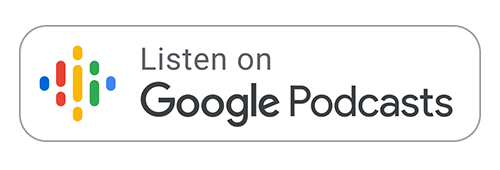
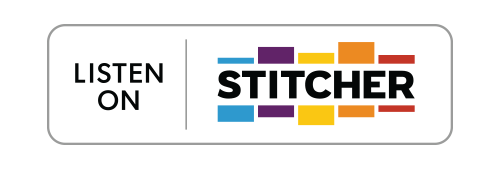
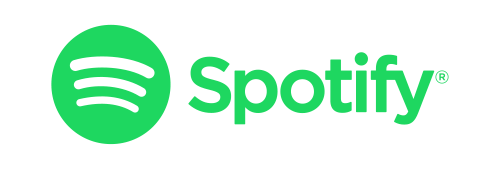




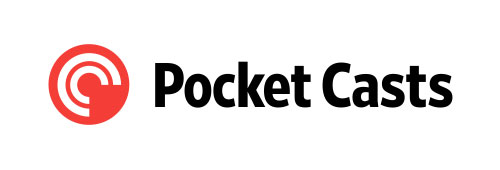
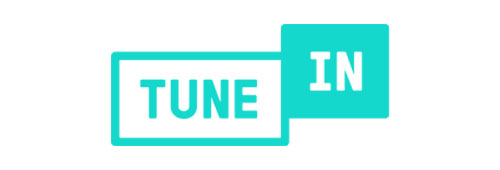
Leave a Reply